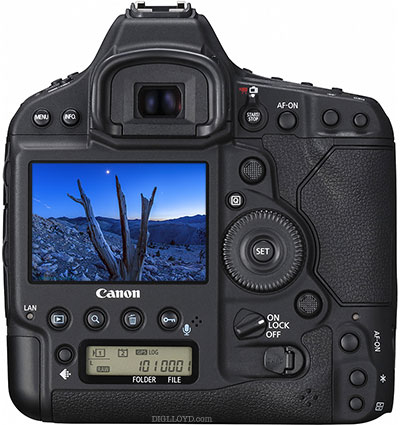Canon EOS 1DX Mark II Maximum Buffer
Get Canon EOS 1DX Mark II at B&H Photo.
Get LensAlign target and WhiBal Certified Neutral White Balance Gray Card at B&H Photo.

Read about WhiBal® Certified Neutral Gray Card, LensAlign® Focus Calibration System, Instant JPEG from RAW Free Raw File Utility at michaeltapesdesign.com.
Michael Tapes of LensAlign fame comments on the Canon 1DX II buffer:
While the 3 of us were shooting I noticed that all of our buffer indicators in the LCD and VF were showing 59 and not the 170 we expected (for the CFast) card. After experimenting at home I came up with the following explanation.
The "buffer" is actually 59 regardless of what card you are using. So the indicator shows the 59. But when you shoot to a Slow CF card, the card cannot write to the card (as it clears the buffer) at 14 frames per second. So the card is slower than the buffer, and therefore once the buffer fills, we have to wait as images clear out of the buffer onto the slow CF card. For the CFast card, it can write approximate 3 files per second, so that for each 3 shots, the buffer goes down one. And for the fast CF card it is in between.
After consulting with the manual again, Canon does not specify the buffer size, but the continuous burst mode which will read the same (59 for RAW) regardless of card used. So everyone has the 59 shot buffer, but the faster the card, the more continuous shots you can take, based on fps as well as card speed (of course ISO and shutter speed can also influence. Here is from the manual:
DIGLLOYD: as I understand this, it’s a rate-in vs rate-out proposition combined with a buffer.
Put another way: stick a hose into a bucket with a hole in the bottom. The bucket has a fixed capacity; the larger the hole (the faster the writing), the faster the bucket empties and thus the more water (frames) that can enter that bucket before it overflows. The “big hole in the bucket” is the fast-writing CFast card, the “small hole in the bucket” is a regular CF card.
According to the Canon EOS 1DX Mark II user manual:






























